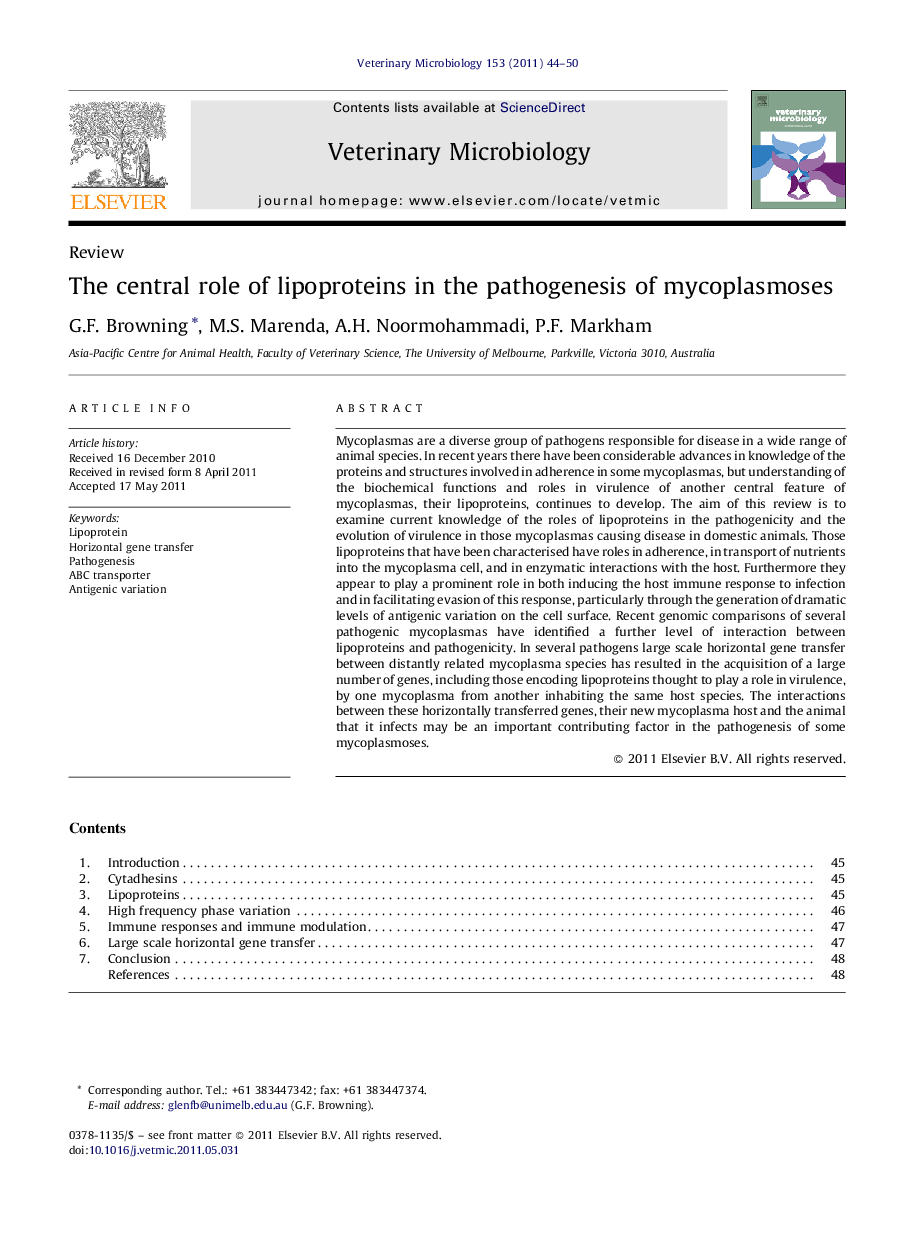| Article ID | Journal | Published Year | Pages | File Type |
|---|---|---|---|---|
| 2467485 | Veterinary Microbiology | 2011 | 7 Pages |
Mycoplasmas are a diverse group of pathogens responsible for disease in a wide range of animal species. In recent years there have been considerable advances in knowledge of the proteins and structures involved in adherence in some mycoplasmas, but understanding of the biochemical functions and roles in virulence of another central feature of mycoplasmas, their lipoproteins, continues to develop. The aim of this review is to examine current knowledge of the roles of lipoproteins in the pathogenicity and the evolution of virulence in those mycoplasmas causing disease in domestic animals. Those lipoproteins that have been characterised have roles in adherence, in transport of nutrients into the mycoplasma cell, and in enzymatic interactions with the host. Furthermore they appear to play a prominent role in both inducing the host immune response to infection and in facilitating evasion of this response, particularly through the generation of dramatic levels of antigenic variation on the cell surface. Recent genomic comparisons of several pathogenic mycoplasmas have identified a further level of interaction between lipoproteins and pathogenicity. In several pathogens large scale horizontal gene transfer between distantly related mycoplasma species has resulted in the acquisition of a large number of genes, including those encoding lipoproteins thought to play a role in virulence, by one mycoplasma from another inhabiting the same host species. The interactions between these horizontally transferred genes, their new mycoplasma host and the animal that it infects may be an important contributing factor in the pathogenesis of some mycoplasmoses.
